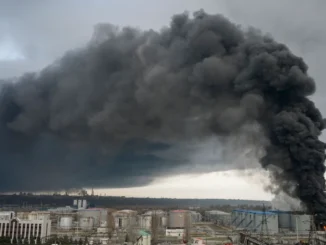
In a move that underscores the ongoing efforts to balance global oil markets, OPEC+ crude oil production surged by 630,000 barrels per day (bpd) in September 2025, reaching a total of 43.05 million bpd.
This increase marks the completion of the unwinding of 2.2 million bpd in voluntary cuts that began in April 2025, as the alliance—comprising OPEC members and key non-OPEC producers like Russia—seeks to regain market share amid resilient demand.
However, questions linger about the sustainability of this ramp-up, particularly in light of geopolitical tensions affecting key players such as Russia.
Breaking Down the Production Surge
The bulk of the September increase came from OPEC members, whose collective output rose by 524,000 bpd to 28.44 million bpd.
Got Questions on investing in oil and gas? Or do you have a Tax Burden in 2025
Saudi Arabia, the group’s de facto leader, led the charge with a 248,000 bpd boost, bringing its production to 9.961 million bpd.
The United Arab Emirates (UAE) followed suit, adding nearly 100,000 bpd, while the exempted trio of Iran, Libya, and Venezuela contributed over 80,000 bpd combined.
Other OPEC nations showed mixed results: Iraq, Kuwait, and Algeria made modest gains aligned with their quotas, but overall compliance remains a watchpoint as some members, like Iraq, have historically overproduced.
On the non-OPEC side of OPEC+, production edged up by 106,000 bpd, almost entirely driven by Russia, which increased output by 148,000 bpd to 9.321 million bpd.
Kazakhstan, however, saw a dip of 26,000 bpd to 1.84 million bpd, exceeding its quota of 1.55 million bpd and highlighting ongoing challenges in group discipline.
Smaller contributors like Oman, Azerbaijan, and Mexico maintained steady levels, with no major shifts reported in September.
Here’s a snapshot of production for key OPEC+ members in September 2025 (in million bpd, based on secondary sources):
|
Country
|
Production (million bpd)
|
Change from August (bpd)
|
|---|---|---|
|
OPEC Members
|
||
|
Saudi Arabia
|
9.961
|
+248,000
|
|
UAE
|
~3.5 (estimated)
|
+~100,000
|
|
Iraq
|
~4.2 (estimated)
|
Modest gain
|
|
Iran
|
~3.3 (estimated)
|
Part of +80,000 group
|
|
Kuwait
|
~2.5 (estimated)
|
Modest gain
|
|
Nigeria
|
~1.4 (estimated)
|
Stable
|
|
Libya
|
~1.2 (estimated)
|
Part of +80,000 group
|
|
Venezuela
|
~0.8 (estimated)
|
Part of +80,000 group
|
|
Algeria
|
~1.0 (estimated)
|
Modest gain
|
|
Others (e.g., Congo, Gabon)
|
~1.6 combined (estimated)
|
Stable
|
|
Total OPEC
|
28.44
|
+524,000
|
|
Non-OPEC OPEC+
|
||
|
Russia
|
9.321
|
+148,000
|
|
Kazakhstan
|
1.84
|
-26,000
|
|
Oman
|
~0.8 (estimated)
|
Stable
|
|
Azerbaijan
|
~0.6 (estimated)
|
Stable
|
|
Mexico
|
~1.6 (estimated)
|
Stable
|
|
Others (e.g., Bahrain, Malaysia)
|
~1.5 combined (estimated)
|
Stable
|
|
Total Non-OPEC OPEC+
|
~14.61 (estimated)
|
+106,000
|
|
Total OPEC+
|
43.05
|
+630,000
|
Note: Estimates for non-specified countries are derived from aggregated OPEC reports and industry analyses
The Russian Factor: Infrastructure Damage Casts a Shadow
Russia’s production gains are particularly noteworthy given the escalating damage to its oil and gas infrastructure from Ukrainian drone strikes. Since March 2024, Ukraine has targeted Russian refineries and depots, inflicting significant harm.
Recent attacks, including a strike on a refinery in Ufa on October 11, 2025, have disrupted operations and forced Russia to curb fuel exports while importing supplies from Belarus, China, and other Asian nations.
Analyses suggest these strikes have knocked out up to 38% of Russia’s refining capacity, though the damage is serious but not yet critical to overall crude production.
With U.S. intelligence reportedly aiding Ukraine’s efforts, the attacks are biting into Russia’s economy, compelling Moscow to dip into emergency gas reserves and potentially limiting its ability to sustain elevated output levels.
While crude exports may rise as refining capacity falters, long-term infrastructure repairs could strain resources, especially amid funding needs for the ongoing conflict. This vulnerability raises doubts about OPEC+’s ability to “keep it up.” If attacks intensify, Russia’s output could falter, tightening global supplies unexpectedly.
What This Means for Investors and Consumers
For investors, the September jump signals a potential cap on oil prices as increased OPEC+ supply meets slowing demand growth—forecast at around 1.1-1.3 million bpd for 2025.
Brent crude hovered around $63 per barrel in early October, but Russian disruptions could spark volatility, pushing prices higher if supply risks escalate.
Energy stocks in OPEC+ reliant firms may benefit in the short term from higher volumes, but geopolitical risks warrant caution. Diversified portfolios eyeing non-OPEC+ growth (e.g., U.S. shale) could offer stability, with projections of inventory builds potentially softening prices toward $50-60 per barrel by early 2026 if no major shocks occur.
For consumers, the production boost could translate to lower fuel and energy costs in the near term, easing inflationary pressures amid economic uncertainties in markets like China.
However, if Russian infrastructure woes lead to export curbs or broader supply chain issues, gasoline prices could spike, particularly in Europe and Asia, which are reliant on Russian flows. The flip side: Ukraine’s own gas production has been halved byIn summary, while OPEC+’s September surge demonstrates the group’s agility, sustaining it hinges on navigating geopolitical minefields, especially in Russia. Investors should monitor compliance and conflict developments, while consumers brace for potential price swings in an already unpredictable energy landscape.
Got Questions on investing in oil and gas? Or do you have a Tax Burden in 2025?
Crude Oil, LNG, Jet Fuel price quote
ENB Top News
ENB
Energy Dashboard
ENB Podcast
ENB Substack







